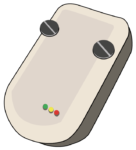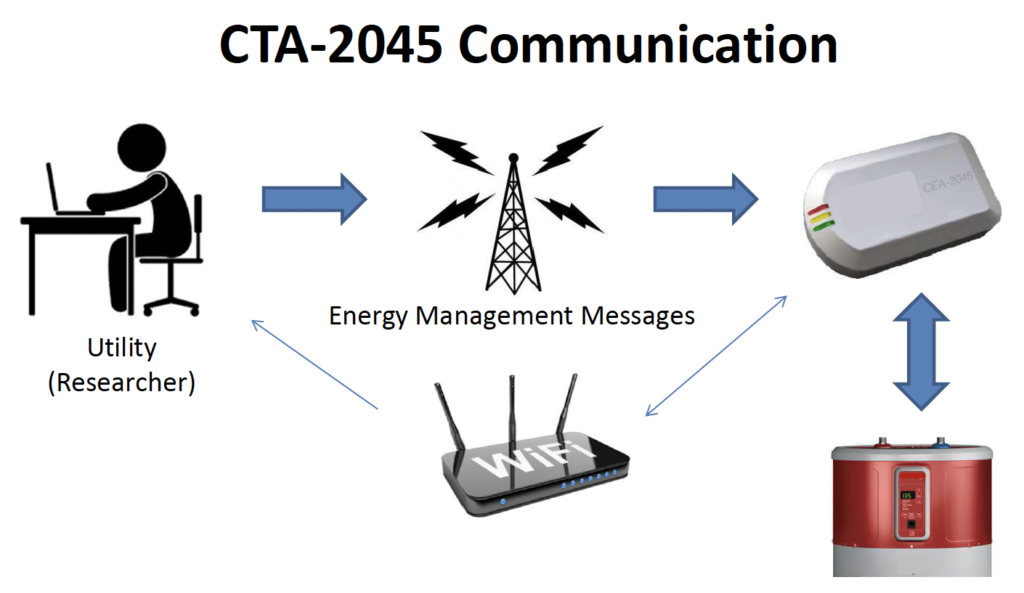In this Smart Water Heater Project, FSEC collaborated with the Pacific Northwest National Laboratory (PNNL) to conduct laboratory and field experiments in Florida to demonstrate the viability of grid-connected heat pump water heaters, compared to electric resistance water heaters. Using an electric load shifting standard protocol, the research aimed to evaluate the load shifting potential of grid-connected HPWHs in a high-impact region.
The field experiments included about 50 Central Florida residences who owned heat pump water heaters with the wiring to connect to a standardized communications device and who were interested in participating in this study. The standard used, ANSI/CTA-2045, allowed researchers to send messages to the water heaters to attempt to shift the operation time of the water heater away from the electrical grid’s peak demand times—but without dropping water temperatures below the homeowner’s needs.
Research Conditions

The laboratory investigation involved four heat pump water heaters of varying capacities and manufactures, and one electric resistance water heater conducted in FSEC’s Hot Water Systems Laboratory. FSEC researchers applied different CTA-2045 shed and critical peak control command designs under three different water draw profiles. All of the tested systems were simultaneously subjected to the same water draws. Electrical power and the tank’s inlet and outlet water temperatures, as well as room and outdoor temperatures, were carefully monitored. A few willing participants were selected for water heating energy use sub-monitoring.
Participation
Social Distance-Friendly Research
Most of the research was conducted remotely with no need for researchers to enter homes during times of heightened pandemic concerns. Participants were helping to create a sustainable future with little effort and very little impact on their lifestyle.
Installation
Participants installed a communications adapter and module, and then connected the smart water heater to their WiFi. The study supplied all required materials (except the water heater). Installation required flipping the water heating breaker on and off.

Monitoring

During this two-year project, participants allowed researchers to send their water heater signals that could slightly scale back water heating during peak times (only if the water heater determined the timing acceptable), or increase it to absorb available renewal energy. Participants always maintained the ability to override the controls. Once set up, the study required minimal attention from participants. If, however, there were wifi connection issues, researchers were able to troubleshoot over the phone.
Surveys
Participants completed three short surveys: one at the beginning, one mid-project, and finally, one at the end, allowing researchers to track home characteristics and occupancy changes that may have influence on study results.
Participants
As a thank you for participating in the research, participates received $125 to $350, depending on configuration. Participation was limited to 100.
Research Period
December 2020 — June 2022
Publications
- ACEEE Paper: Detailed Laboratory Evaluation of Electric Demand Load Shifting Potentialof Controlled Heat Pump Water Heaters
- ACEEE Presentation: Detailed Laboratory Evaluation of Electric Demand Load Shifting Potential of Controlled Heat Pump Water Heaters [PDF, 3MB]
- ASHRAE Paper: Detailed Evaluation of Electric Demand Load Shifting Potential of Heat Pump Water Heaters
- Final Report: Connected Water Heater Load Shifting and Energy Efficiency Evaluation for the Southeast: Winter Laboratory Assessment
